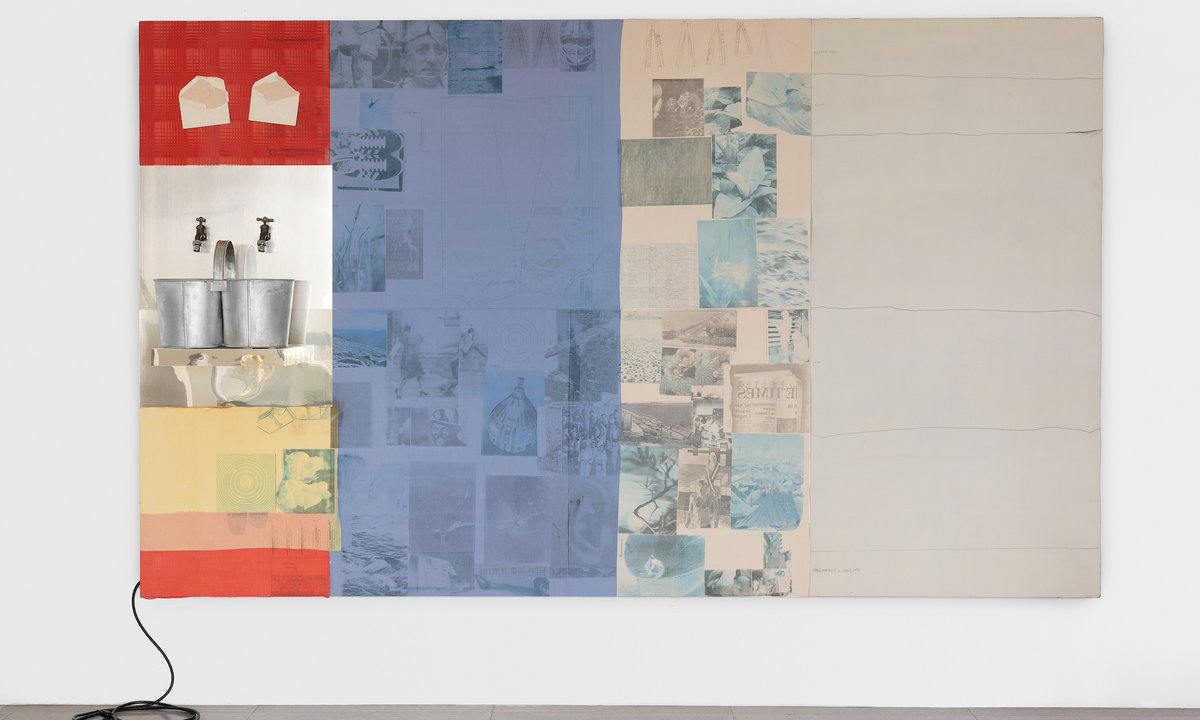Robert Rauschenberg, Sea-Cow Treaty (Spread), 1977 Collection of the Vancouver Art Gallery, Promised Gift of Brigitte and Henning Freybe. © Robert Rauschenberg Foundation/CARCC Ottawa, Photo: Vancouver Art GalleryTacita
The Vancouver Art Gallery (VAG) announced on Friday (17 January) that it has received a promised gift of 122 works from the local collectors Brigitte and Henning Freybe valued at over C$10m ($7m).
The most significant donation of international contemporary art in the gallery’s history was welcome news for the beleaguered VAG, which announced last month it was scrapping plans for a new C$600m ($444.6m) Herzog & de Meuron-designed building that had been in development for more than a decade.
The Freybes have been collecting art for over six decades and their diverse collection spans painting, printmaking, sculpture, film, photography and installation. Their gift to the VAG includes works by what VAG director Anthony Kiendl calls “some of the most important European and North American artists working in the last 50 years”—many rarely shown in Vancouver—including Nairy Baghramian, Christian Boltanski, Daniel Buren, Tacita Dean, Frank Stella, Alicja Kwade, Wolfgang Tillmans, Robert Rauschenberg, Julie Mehretu and William Kentridge. The Freybes’ collection also celebrates Vancouver artists, and their gift includes work by Beau Dick, Stan Douglas, Geoffrey Farmer, Rodney Graham, Brian Jungen and Jeff Wall.
Henning and Brigitte Freybe, 2024 Photo: Christos Dikeakos
“We are honoured to accept this transformative gift from the Freybes,” Kiendl said at a celebratory reception Thursday night. “The Freybe collection is diverse and wide-ranging—materially, geographically and conceptually—and at its core, it honours the creativity and knowledge that artists produce. This acquisition will reshape the gallery’s holdings of local and international art and add significant works by major figures from the contemporary art world.”
Highlights from the gift will be featured in an upcoming exhibition, Postcards from the Heart (18 April-5 October) and bringing together paintings, sculptures, photographs, films and works on paper from the 1960s to today.
The Freybes have championed contemporary art in Vancouver for decades. Brigitte Freybe co-founded the Contemporary Art Society of Vancouver in 1972 and, in 2015, she and her husband Henning, the retired chairman and founder of Freybe Gourmet Foods, founded Griffin Art Projects to give back to the community. Their personal relationships with artists whose works they collected will be revealed through archival photos and ephemera also included in Postcards from the Heart.
Rodney Graham, Pipe Cleaner Artist, Amalfi, ‘61, 2013 Collection of the Vancouver Art Gallery, Promised Gift of Brigitte and Henning Freybe. Photo: Courtesy of 303 Gallery
“This is an extraordinarily special moment for us to not only see our collection together, but to share these significant and visionary artistic voices with Vancouver audiences and beyond,” the Freybes said in a joint statement. “We are deeply invested in the Vancouver Art Gallery and its offering to the city. Gifting our collection to the gallery and investing in its future is our way of giving back to this important community.”
Henning Freybe told The Art Newspaper that the gift had been planned for some time but that he and his wife had been waiting for the right moment to make it official. Citing their long relationship with the VAG—Henning was a board member in the 1970s and his wife in the 80s—he said he felt that their legacy “was in safe hands at the VAG. We could have donated the works to the National Gallery in Ottawa, but we knew that the art would be seen more widely here in Vancouver and not just stored in a basement.”
He added that the couple’s relationship with the VAG has “been a wonderful part of our life just like the art has been a wonderful part of our life”.
Left: Tara Donovan, Toothpicks, 2004. Right: Frank Stella, Piaski III, 1973 Donovan: Collection of the Vancouver Art Gallery, Promised Gift of Brigitte and Henning Freybe. Photo: Vancouver Art Gallery. Stella: Collection of the Vancouver Art Gallery, Promised Gift of Brigitte and Henning Freybe, © 2024 Frank Stella/Artists Rights Society (ARS), New York/CARCC Ottawa, Photo: Vancouver Art Gallery
Highlights of the exhibition include Tara Donovan’s Toothpicks (2004), a free-standing cube assembled from hundreds of thousands of wooden toothpicks, which celebrates the transformation of materials—a recurring theme in the Freybe collection.
A jewel of the collection is Sea Cow Treaty (Spread) (1977), a sculptural wall-based work by Robert Rauschenberg. The assemblage encompasses a working water feature with twinned taps that emit red and blue water into conjoined buckets. It will be shown for the first time in a museum setting, with support from the Robert Rauschenberg Foundation on the occasion of the artist’s 100th birthday.
Another work from the same era included in the gift and the exhibition is Frank Stella’s Piaski III (1973). The canvas, felt and paint on corrugated cardboard work is from the artist’s important Polish Village series of assemblages. Brigitte Freybe told The Art Newspaper: “It was one of the first works we acquired in 1973. And it was sold to us by Doug Chrismas.” (The dealer, who started his career in Vancouver, was sentenced to two years in federal prison in the US earlier this week.)
Respini, previously the chief curator at the Institute of Contemporary Art in Boston, comes to the Vancouver museum as it plans a major building project
Union boss calls museum's recent offer "an insult"
An exhibition at the Vancouver Art Gallery grapples with how the museum ended up with ten fake works previously attributed to J.E.H. MacDonald, a member of the famous Group of Seven
The celebratory event marked a major milestone in a process begun in 2004; the new building is expected to be complete in 2028

